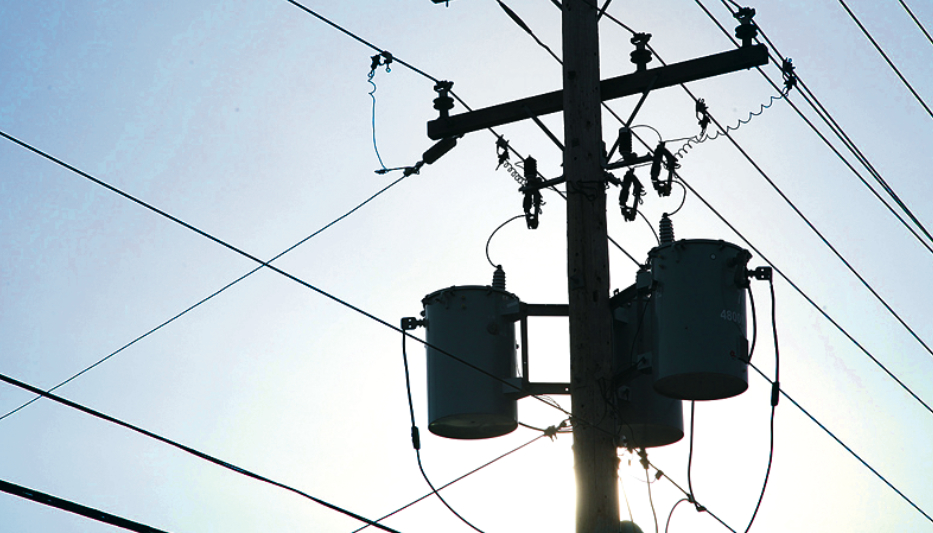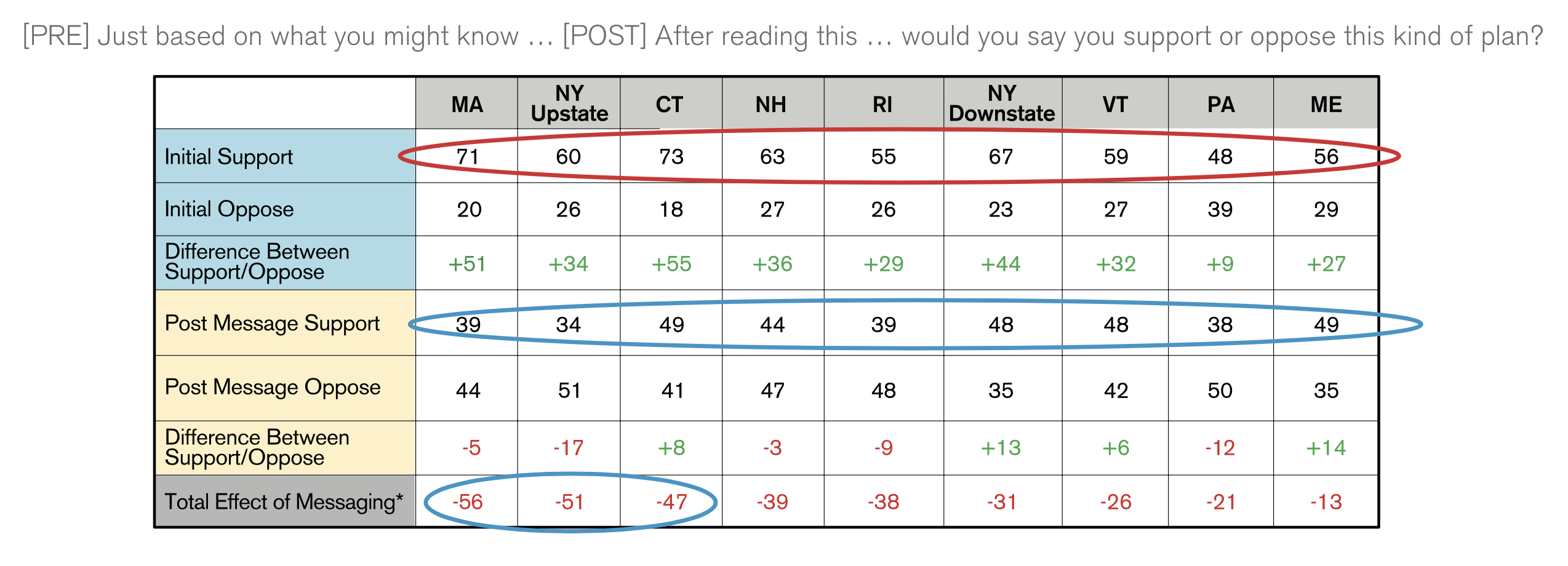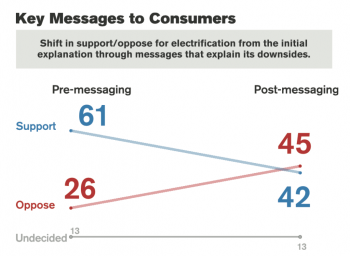All
What Voters Think About Energy and Electrification

Results from the heating oil industry’s largest consumer survey in modern history
Do voters support electrification? Do they understand its ramifications? Is climate change an important issue? What should government’s role be in reducing greenhouse gas emissions? These are just some of the questions presented to registered voters across the Northeast.
NEFI commissioned a survey of 3,600 registered voters across eight states, representing the heating oil industry’s largest consumer research study in its history. The primary goal: understanding what consumers think about energy issues and the “electrify everything” movement, and how best to influence opinions on it.
State heating oil associations in Connecticut, Massachusetts, Maine, New Hampshire, downstate New York, Upstate New York, Pennsylvania, Rhode Island, and Vermont partnered with NEFI to fund the project. The survey was conducted by Warm Thoughts Communications and responses were collected between February 20 and March 29, 2022.
This article offers a brief overview of the regional survey report, “Blazing a Path to a Renewable Future: Attitudes and Behaviors Regarding Energy Issues and Electrification.” To see the report for your area, contact your state heating oil association.
Importantly, NEFI does not endorse any particular viewpoint expressed by survey respondents or by the survey itself. The survey was conducted solely to gather information on the opinions of registered voters, and the report was issued to convey those findings to heating oil industry stakeholders. Determinations about how this information can be used should be made in consultation with your trade associations and should take into account many considerations including but not limited to possible political repercussions for your business and the industry at large.
Voter Concerns about Climate Change and Inflation
Nearly 80% of voters region-wide identify climate change as a serious threat, including a majority of Republican voters. This tells us that in most corners of the Northeast, any discussion of electrification — with voters or legislators — cannot embrace an argument that minimizes voter concerns for the need to address climate change.
Perhaps more importantly, voters identify inflation as their most important issue. This comes as no surprise considering the timing of the survey. It is the first time in the survey results, but certainly not the last, where voters highlight cost concerns as a driving force in their decision-making.
Strong Support for Electrification – Until the Realities Are Introduced
According to the report, 58% of consumers support efforts to transition to an all-electric economy. Notably, this level of support is based only on what consumers know or assume before taking the survey. Similarly, 57% of consumers support mandates or subsidies to encourage conversions to electric heat pumps. However, a strong majority — more than 80% in most states — say they support subsidies only if they cost less than $500 in tax increases.
Additionally, support for electrification increases from 58% to 66% when basic details — like goals and targets — are presented to voters.
In an attempt to understand what information might influence voter attitudes about electrification, survey respondents were presented with a series of statements explaining the potential downsides of their state’s climate plan. These statements addressed a wide range of issues from national security to the impact on low-income families.
According to the report, the top argument against states’ climate plans is the high cost of conversion. Specifically, the most effective message stated, “These kinds of plans will force homeowners who use propane, natural gas or home heating oil to switch to electric heat pumps, which could cost upwards of $20,000 or more.”
This message raised major doubts about state climate plans among voters across the region, but it wasn’t the only cost-related message that resonated with voters. A warning about the impact of electrification on low-income families was the top message in five out of the nine regions and the second-most impactful message overall. That message stated, “Forcing homeowners to spend thousands of dollars to convert to new heat sources will hit low-income families the hardest, as they will either pay as homeowners or through increases in rent if they are renters.”
Rounding out the top-three messages was one on increasing electricity costs: “By effectively forcing [state] homeowners to use electricity instead of propane gas, natural gas or heating oil, these plans will significantly increase electricity usage and require substantial investment in electrical infrastructure, which will result in much higher electricity costs for homeowners, renters and businesses in [state].”
Messaging that Moves the Needle
After these messages were presented, voters were asked whether their level of support of, or opposition to, electrification changed as a result. The movement was significant. Voter support for electrification fell by 19 points and opposition increased by the same amount – a 38-point swing across the region.
Rhode Island voters represent the median across the region. There, voter support for their state’s climate plan fell from 55% to 39%. At the same time, opposition to the plan increased from just 26% to 48%. The swing was most significant in Massachusetts, where messaging resulted in a 56-point change in voter opinions, and least so in Maine, where messaging results in just a 13-point change.
Importantly, in almost every single area where voters were surveyed, support for their states’ climate plans started above 50% and fell below 50%. The one exception was Pennsylvania, where support started at just 48% and fell to 38%.

Solutions & Conclusions
The survey didn’t just point out possible problems with forced electrification. It also suggested four alternative solutions for reducing greenhouse gas (GHG) emissions at the state level. According to the report, all of these solutions were widely supported by voters across the Northeast. However, the most popular solution was one promoting multiple paths to GHG reductions.
Asked “Which of the following statements most accurately reflect your feelings about government action related to GHG emissions,” more than 60% of voters in every area surveyed chose the response, “Rather than putting all of our eggs in one basket — electrification — these plans should support requiring an elimination of carbon output of all existing heating fuels and equipment.”
Survey results also indicated that voters have a favorable view of Bioheat® fuel and other biofuels, but that awareness levels are low, even among existing heating oil customers. There are some indications that a Bioheat fuel message is reaching certain demographics, however. For example, 58% of downstate New York survey respondents age 25-44 say they have heard a great deal or some about Bioheat fuel.
Voters also voice their support for ethyl levulinate. By a 4.5–to–1 margin Maine voters said they wanted their state representatives to support a bond proposal that would have made ethyl levulinate more readily available.
Perhaps the most important conclusion that can be drawn from the survey is that while support for electrification is strong — and increases when voters learn the basics of state plans to electrify — support drops significantly when a counter-narrative that focuses on the issues of cost is introduced. There is an opportunity for the industry to influence the conversation and move voters. The question for all stakeholders will be “How can we best affect change?” and “What resources can we deploy to make our case to the public?”
“While heating oil’s prices are very high right now, consumers may not know that electricity is becoming dramatically more expensive and these costs will only continue to increase,” said NEFI President & CEO Sean Cota. “This survey demonstrates that voters agree climate change is a monumental challenge, which will require a full toolkit of renewable energy solutions including the GHG-reducing biofuels our members already deliver as well as carbon-neutral fuels that will come online in the near future.”
“On behalf of the entire NEFI team, I want to thank all of the state associations for their cooperation on this survey, which wouldn’t have been possible without their support,” Cota continued. “We look forward to further engaging these groups as NEFI begins the next phase in our work to ensure the continued growth of the renewable liquid heating fuels industry for future generations.”
Related Posts
 From Retailer to Representative: Chris Keyser’s Road to the Vermont State House
From Retailer to Representative: Chris Keyser’s Road to the Vermont State House
Posted on June 16, 2025
 Northeast Working Group for Industry Principles Gets to Work
Northeast Working Group for Industry Principles Gets to Work
Posted on May 8, 2025
 Trump Policies and Energy Markets
Trump Policies and Energy Markets
Posted on April 28, 2025
 NEFI Introduces the National Home Comfort PAC
NEFI Introduces the National Home Comfort PAC
Posted on April 28, 2025
Enter your email to receive important news and article updates.

